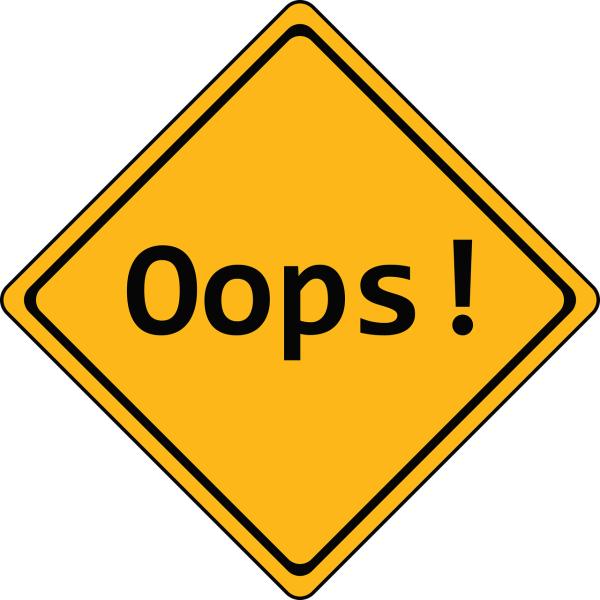The rising gargantuan malpractice verdicts pockmarks the country, peaking in New York, Florida, and Illinois and bubbling in Utah and Georgia, where they were once rare. A NY jury recently awarded $120 million to a patient who suffered a stroke following delayed care. In 2022, a Minnesota jury awarded 110 million dollars (subsequently reduced to $10 million) for pain and disability after failing to diagnose a patient’s “compartment syndrome” [1] following a soccer injury. While some awards are reduced on appeal, these higher awards are co-opted to induce higher settlements. Doctors and insurers are running scared.
My experience with med mal cases begins with the 1970s med mal crisis, and while this time the drivers may be different, the end result is the same: insurers want out of the business, and premiums are increased. Doctors complain that they must practice “defensive medicine,” which can be costly and dangerous.
Deja vu all over again
During the last crisis (memorably associated with an $800,000 award for a misplaced belly button during tummy tuck surgery), mechanisms were implemented by the defense bar and physician groups to keep things in check. Some worked – liked forcing plaintiffs’ attorneys to try every case they brought, eschewing settling nuisance cases. “Millions for defense, not a penny for tribute” was the motto of the defense bar. We thought it was original and suited the times. Little did we know how history repeats itself.
Keeping plaintiffs’ attorneys busy trying defensible cases, previously settled because the “nuisance value” was cheaper than the defense, was an effective solution. Plaintiff’s attorneys don’t get paid unless they settle or win – and if they are cooling their heels in a courtroom arguing a sham case- they aren’t making money. Indeed, most reputable attorneys will only handle cases with a potential for large verdicts (as current verdicts demonstrate).
Other “solutions” worked for a time, like legislatively enacted caps on damages for pain and suffering. Thirty-five states continue to cap damages. However, some courts have recently ruled these caps wholly or partially unconstitutional. Utah's cap, still partly enforced, was deemed unconstitutional in wrongful death cases.
Another attempted solution were “medical malpractice panels,” non-binding pre-trial assessments by a panel composed of an impartial lawyer, physician, and a judge (familiar with handling med mal cases), or in some jurisdictions, a layperson. They review the anticipated evidence (without considering technical or evidentiary objections) and assess liability. Their findings were not binding but can be put before a jury if the case isn’t settled or withdrawn.
Having sat on these panels as the lawyer member and having argued on behalf of doctors or hospitals – the panels didn’t work. They “cost” a lot in terms of preparation time (increasing legal expenses) and had little impact on either side’s decision to proceed or settle. Lawyers are wedded to the merits of their cases and create persuasive and effective arguments to persuade a jury to disregard the findings of this “impartial panel of experts.” [2] One study attributed a reduction in trials (but not awards) to these panels. Those in the know attributed that result to the “make ‘em try it” approach. Indeed, the panels were disbanded in New York in 1983, about ten years after they first appeared. However, NY still requires a certifying affidavit from a physician before the plaintiffs can institute a case. Sixteen states continue to require panels to hear cases.
Utah’s panels, implemented in 1985, stealthily increased their powers, blocking plaintiff’s suit after an adverse panel without an additional affidavit by a healthcare provider validating the claims. Even then, the panel was free to reject that affidavit. That provision was struck down by the Utah Supreme Court in 2019 as unconstitutional. This March, a Utah jury returned the state’s largest med mal verdict of 11 million dollars (for paralysis and inability to speak caused during unnecessary and unwarranted surgery.) Utah has a cap of $450,000 for pain and suffering, so the award was a pyrrhic victory at best – but useful to instigate inflated settlements.
The major concern, then and now, is that these sky-rocketing awards are increasing malpractice premiums. No one really knows the reason for the sudden surge, although some conjectures have been raised.
“One theory is that plaintiffs' attorneys held back on resolving high-dollar cases during the COVID pandemic and let loose with high-demand claims when courts returned to normal. Another theory is that people emerged from the pandemic angrier… and.., you don't want an angry jury."
– Richard Henderson, senior vice president, TransRe Insurance.
The real question is whether the suits are valid. Some claim plaintiffs’ attorneys are invoking “extraneous’ concerns like asking juries to “punish” the providers to deter future negligence.
"I am concerned that jurors are trying to right social wrongs rather than judging cases on the facts presented to them."
- Mike Stinson, VP Policy and Legal Affairs, Medical Professional Liability Association.
There are two sides to every story. In the Philadelphia case, the plaintiffs argued that a 45-minute delay in performing a caesarian section caused her baby to be born with Cerebral Palsy and neurological injuries requiring lifelong care. The defense argued the causation question: Even if there was a delay- did it harm the baby? They claimed the infant had sustained the injuries before the mother arrived at the hospital. The jury, it appears, wasn’t convinced.
We tend to think the med mal crisis is something new. It’s not. Doctors warn that practicing defensive medicine will drive up medical costs. Actually, it’s always been so. In my experience, people sue doctors for the same two reasons: Either the doctors/hospitals are careless (a mistake in judgment is not malpractice, provided the doctor acted thoughtfully in line with reasonable medical care), or there was an untoward outcome – and someone has to be blamed, whether they are legally responsible or not.
A concerted effort to identify often repeated mistakes might be one effective way to prevent errors and more careful (and perhaps graphic) informed consent procedures, which might further apprehension of possible untoward outcomes so patients are prepared. But doctors also might work on their reluctance to embrace new technologies which might protect patients (and themselves). AI, for example, or telehealth.
The case of Smith v. Grant
In June of 1895, James Smith “took a fall” and sought the care of eminent surgeon William Grant, who, as customary in those days, made a house call, palpated the injury, and missed the fractured femur. Six months later, William Roentgen discovered X-rays. Four months later, Dr. Grant was sued, and Mr. Smith introduced this new invention to court to prove his case. The medical community was outraged; they criticized and feared the invention.
“It cannot fairly be said that they [the X-rays] have yielded much information of practical value which could not have been obtained by palpation.”
- Professor Lewis Stimson of the Cornell University Medical College.
In the late 19th century, med mal had become an epidemic, and doctors foresaw that X-rays would routinely be used, not to diagnose fractures, but by nefarious lawyers to prove their cases. Medical societies called special meetings to discuss means of protection ”against unjust and malicious suits for malpractice, instituted by irresponsible parties, and conducted ordinarily by impecunious attorneys upon shares.” [3]
And with X-rays came the beginnings of defensive medicine. Experts of the day advised that “in all obscure, complicated, and unusually difficult cases, the help afforded by the Roentgen rays shall be secured by the surgeon, even if it is done chiefly with the view to his own protection." [4]
“A surgeon is not safe unless he has a shadowgraph taken before and after each operation.”
- Chicago Professor Preston Pratt, 1898.
Despite the opposition from medical societies, X-rays were admitted into evidence, pressuring Dr. Grant to settle. Urging Dr. Grant against settlement (he ultimately did), his friend Dr. Mordecai Price, advised:
"Such cases should under no circumstances be compromised - not a penny for tribute, but all we have for self-defense.”
Alas, the more things change…. it’s time our behaviors, legal and medical, stopped staying the same.
[1] Compartment syndrome occurs when pressure builds up within a closed space, in this instance, the leg, resulting in diminished blood flow to the muscles and nerves and ending with paralysis or loss of the limb.
[3] “How Shall Physicians Protect Themselves” Colorado Medical Journal 3 (1897): 34-35.
[4] "Rontgen Rays in Surgery” Transactions of the American Surgical Association 15 (1897)
Source: The Authority of Shadows: The Legal Embrace of the X-Ray Tal Golan




